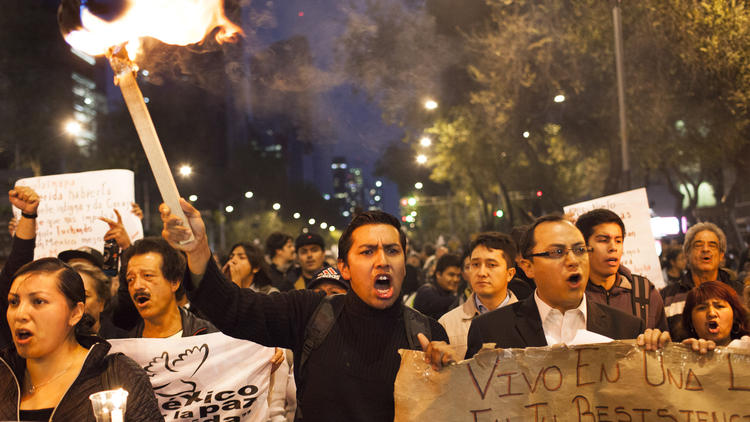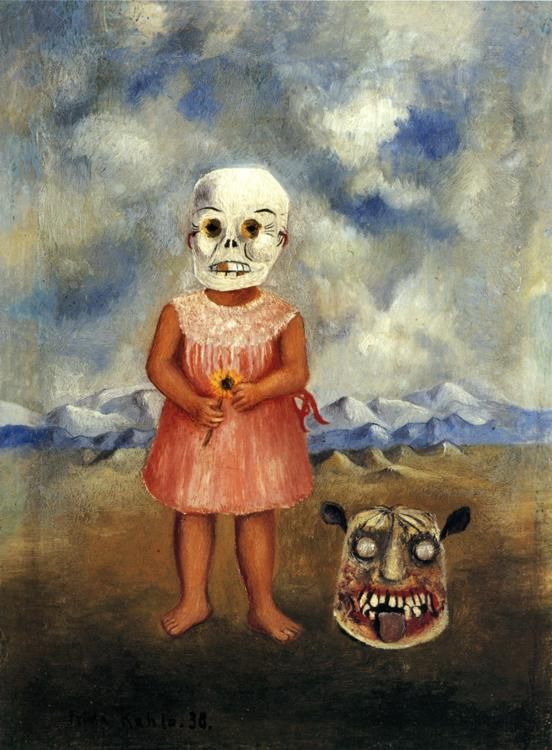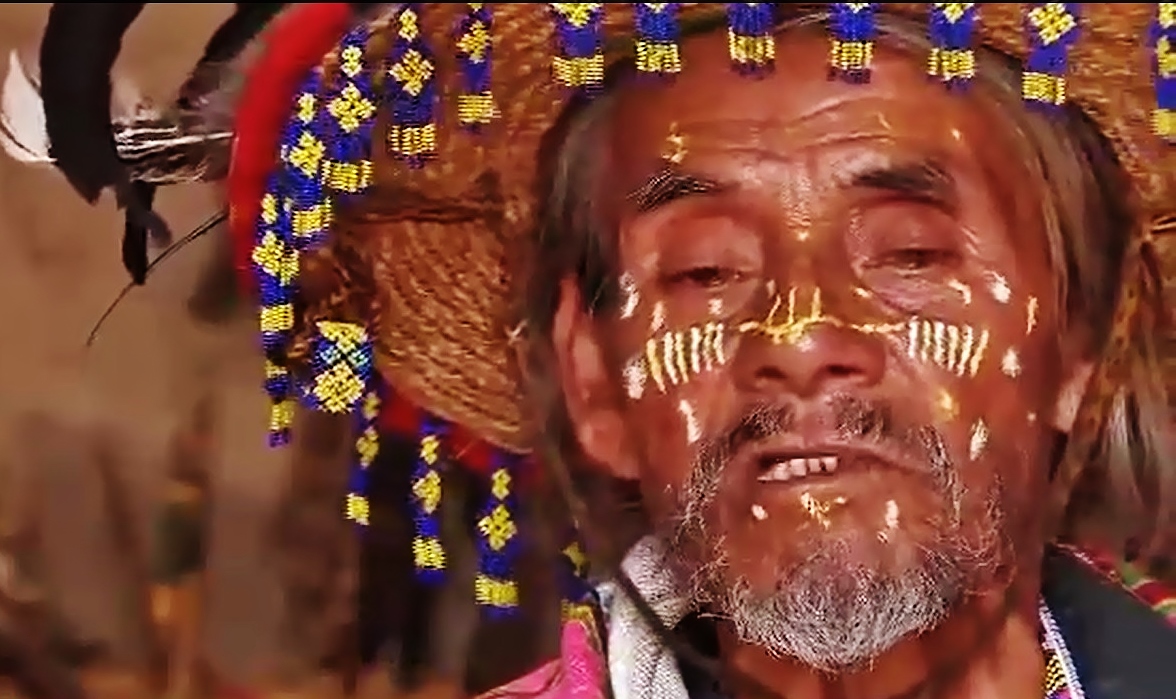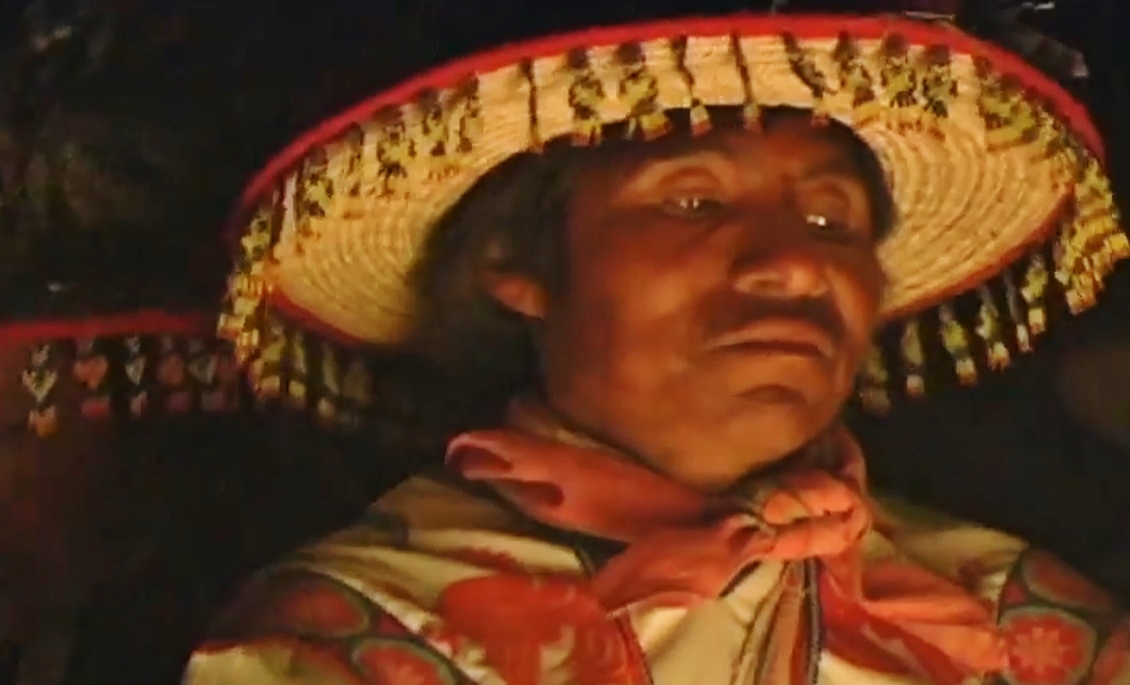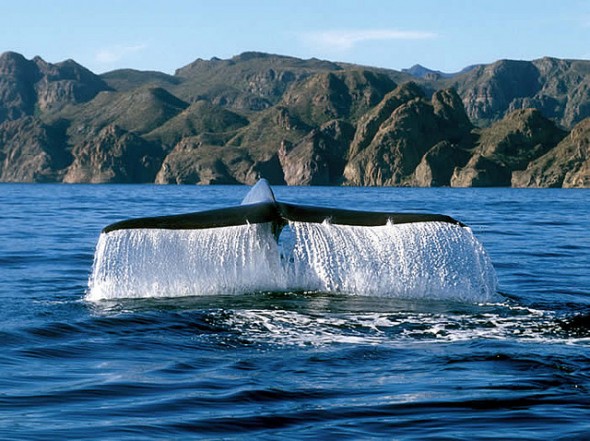Part of the Mesoamerican myth of the origin of people, where Quetzalcoatl, the Plumed Serpent, descends into the Land of the Dead, Mictlán, to rescue the bones of humanity and bring them back to life.
Tag: Mexico
Mexico’s Ayotzinapa 43: Revolutionary Movement Grows Amid US Silence
The disappearance of 43 rural students in a city surrounded by mass graves, in a region controlled by an unholy alliance of drug traffickers and corrupt public officials and police, in a country ruled by neoliberal multinational interests backed by an iron hand has awakened Mexican despair and rage.
Calavera de Azúcar: Painted Sugar Skulls on Dia de los Muertos
Mexico’s traditional celebration of Dia de los Muertos embraces the inevitability of death. Painting faces in the style of Santa Muerte (Saint Death), Calavera Catrina (Dame Skeleton), or another loving tribute to the counter-Guadalupe icon Frida Kahlo pays homage to the beauty in death, offering eye-candy sugar skulls in tribute to the ancestors.
Peyote Guardians: The Huichol Struggle of Life and Spirit
Two documentary films chronicle the struggle of the Huichol or Wixárika People to protect their culture and spiritual connection with the ancestors, through the journey to Wirikuta, where peyote grows, now threatened by mining and development interests.
Pamparios: A Trip with the Huicholes to Collect Peyote
Watch the full documentary on the Huichol journey to Wirikuta, where they travel every year to collect peyote. The pilgrimage take place with the intention to return to where life originated and heal oneself and the community.
B. Traven’s “Macario” – Magical Realist Journey on Day of the Dead
The Mexican film Macario (1960) weaves a tale of magical realism – with special appearances by God, the Devil and Death. It all begins on the Day of the Dead, when a campesino named Macario goes on a hunger strike. B. Traven, the mysterious German writer exiled in Mexico, wrote the story, inspired from indigenous folk tales.
Baja California: An “Earthly Paradise” in the Desert
Baja California, despite proximity to the US and recent rampant growth, remains a wild and untamed coastal desert. Behind the charming pueblitos and peaceful resorts lies a varied history where conquest and development have moved both slow and fast. Following a recent trip to the Gulf of California town of Loreto, this first in a series of articles attempts to define what makes the place special, as well as what the future holds for this (mostly) hidden resort region.


